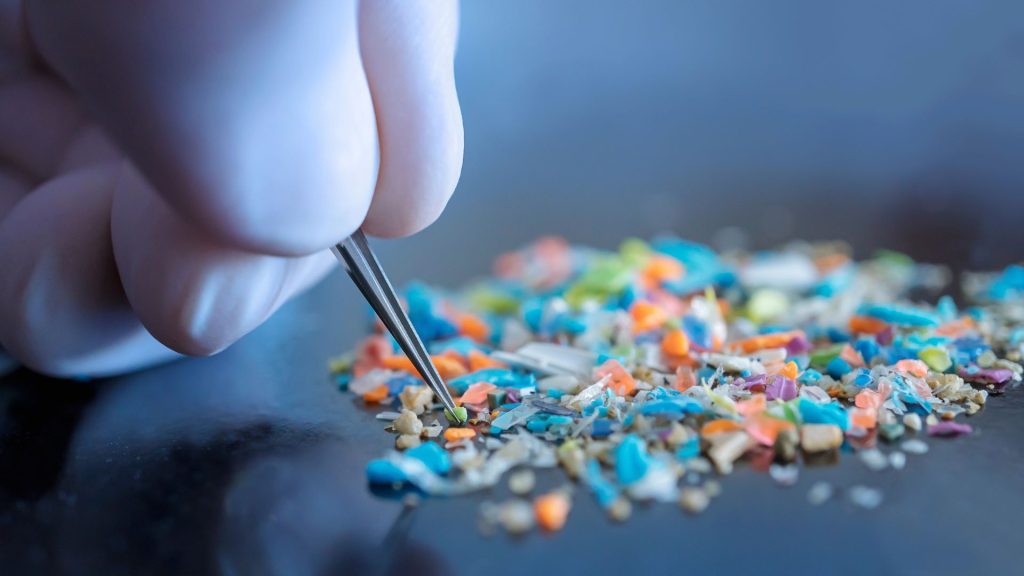Are You Breathing in Microplastics at Home? What Every Homeowner Should Know
We do so much to keep our homes healthy—cleaning surfaces, filtering water, even switching to natural cleaners—but there’s one invisible threat many of us haven’t even considered: microplastics in the air. These tiny plastic particles are floating all around us, especially indoors, where we spend most of our time. You can’t see them or smell them, but research shows we’re breathing them in every single day—and that’s raising serious concerns about what they might be doing to our health. Let’s break down what microplastics are, how they get into your home’s air, and what you can do to protect the people you love most.
What Are Microplastics, and Why Are They in the Air?

Microplastics are exactly what they sound like—tiny plastic particles, usually less than 5 millimeters in size. Some are so small you’d need a microscope to see them. They come from everyday items like food packaging, synthetic fabrics (think yoga pants and fleece blankets), plastic containers, and even your vacuum cleaner. As these materials break down over time, they release microscopic particles that end up in the air you breathe.
Surprisingly, indoor air often has more microplastics than outdoor air. Why? Because our homes are filled with plastic-based items—from carpets to furniture to electronics. Every time we walk across the floor, fluff a pillow, or run the dryer, tiny plastic particles are released into the air. And once they’re airborne, it’s all too easy for them to make their way into our lungs.
The Scary Truth: What Microplastics Can Do to Your Health
Breathing in microplastics isn’t just an unsettling thought—it’s a real concern backed by growing scientific research. These tiny particles may be invisible, but they’re anything but harmless.
They Can Get Deep Into Your Lungs
Once airborne, microplastics are small enough to travel deep into your respiratory system. Larger particles might get caught in your nose or throat, but smaller ones—especially those under 10 microns—can reach the lungs and even enter your bloodstream. Over time, this can lead to chronic inflammation, irritation, and damage to lung tissue. If you or someone in your home has asthma or other respiratory issues, exposure could make symptoms worse.
They Carry Harmful Chemicals
Many plastics contain chemical additives like BPA, phthalates, and flame retardants—substances that are linked to hormone disruption, reproductive issues, and certain cancers. These chemicals don’t just stay in the plastic; they can leach out once microplastics enter the body, potentially interfering with your endocrine system and affecting long-term health.
They Act Like Sponges for Toxins
Microplastics don’t just pose a risk on their own—they also attract and carry other dangerous substances. Like little magnets, they can pick up heavy metals, pesticides, and even bacteria from the environment. When you breathe them in, you’re potentially bringing those toxins directly into your body—no warning, no filter.
We Still Don’t Know the Full Picture
Perhaps the most concerning part? Researchers are just beginning to uncover the full extent of microplastic exposure. But what we know so far is enough to sound the alarm. Even in small doses, the combination of chemical exposure, inflammation, and toxin transport is something most of us would rather avoid—especially inside our own homes.
Why Your Air Filter Matters More Than You Think
If microplastics are floating around your home’s air, your HVAC system isn’t just circulating air—it’s circulating everything in it, including those invisible particles. That’s where your air filter comes in, and not all filters are created equal.
Pleated Filters Offer Better Protection
Unlike those thin, flat filters you can almost see through, pleated air filters are made with tightly woven fibers that are folded like an accordion. This gives them a larger surface area to trap more particles—including many of the larger microplastics floating in your air.
The key is in the MERV rating (short for Minimum Efficiency Reporting Value). The higher the rating, the better the filter is at capturing small particles. For most homes, a filter rated MERV 11 to 13 strikes the perfect balance between strong filtration and good airflow. These filters are capable of capturing fine dust, allergens, mold spores—and yes, many microplastic particles, too.
A Dirty Filter Can’t Protect You
Even the best filter won’t do much if it’s clogged with dust and debris. A dirty filter struggles to trap new particles and can actually recirculate dirty air throughout your home. Make sure you’re changing your air filter every 1 to 3 months, depending on your household’s needs (pets, kids, allergy issues, etc.).
Think of It as a First Line of Defense
While no filter will catch every microplastic, using a high-quality pleated filter is a powerful step toward cleaner, healthier air. It’s one of the simplest ways to reduce your family’s exposure without overhauling your entire home.
How to Take Action Right Now
You don’t need to turn your home upside down to start protecting your family from microplastics. A few small, smart changes can go a long way toward improving your indoor air quality and giving you some well-deserved peace of mind.
1. Upgrade Your Air Filter
Start by switching to a pleated air filter with a MERV rating of 11 to 13—just make sure your HVAC system can support it. This is one of the most effective ways to trap harmful particles before they reach your lungs.
2. Replace Filters Regularly
Mark your calendar and change your air filter every 1 to 3 months. If you have pets, kids, or allergy sufferers in the house, you might need to change it more often.
3. Cut Back on Plastic Where You Can
Choose natural materials like cotton, wood, and glass over synthetic options when it comes to furniture, clothing, and storage. Reducing the amount of plastic in your home helps limit how much breaks down into the air.
4. Wash and Dry Synthetic Clothes With Care
Fabrics like polyester and nylon shed microplastics when they’re washed or tumble dried. If you can, air-dry these items or use a microfiber-catching laundry bag to help minimize the release of particles.
5. Keep Dust Under Control
Dust is one of the biggest carriers of microplastics indoors. Vacuum and dust regularly—especially in high-traffic areas—and focus on places like under beds, around vents, and on upholstery. (Bonus points if your vacuum has a fine filter.)
Breathe Easier—You’ve Got This
You might not be able to see microplastics, but they’re quietly becoming a part of our everyday lives—and not in a good way. The good news? You don’t have to feel helpless. By upgrading your air filter, cutting back on plastic use, and being more mindful of what’s floating around in your space, you can take real steps to protect your home and your health.
You work hard to create a clean, safe environment for the people you love. Tackling microplastics might feel like a small change—but it could make a big difference in the long run. And sometimes, it’s those invisible threats that deserve the most attention.







